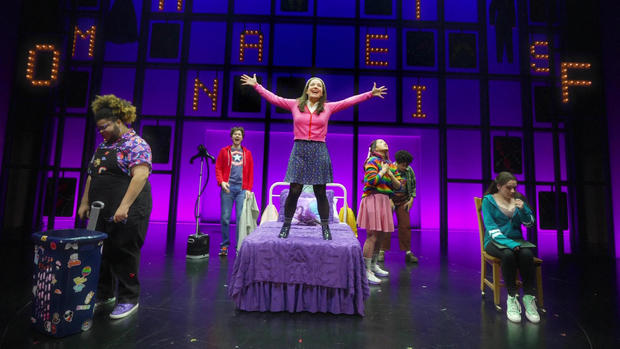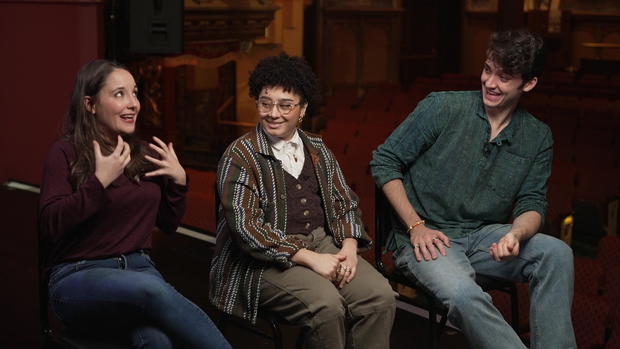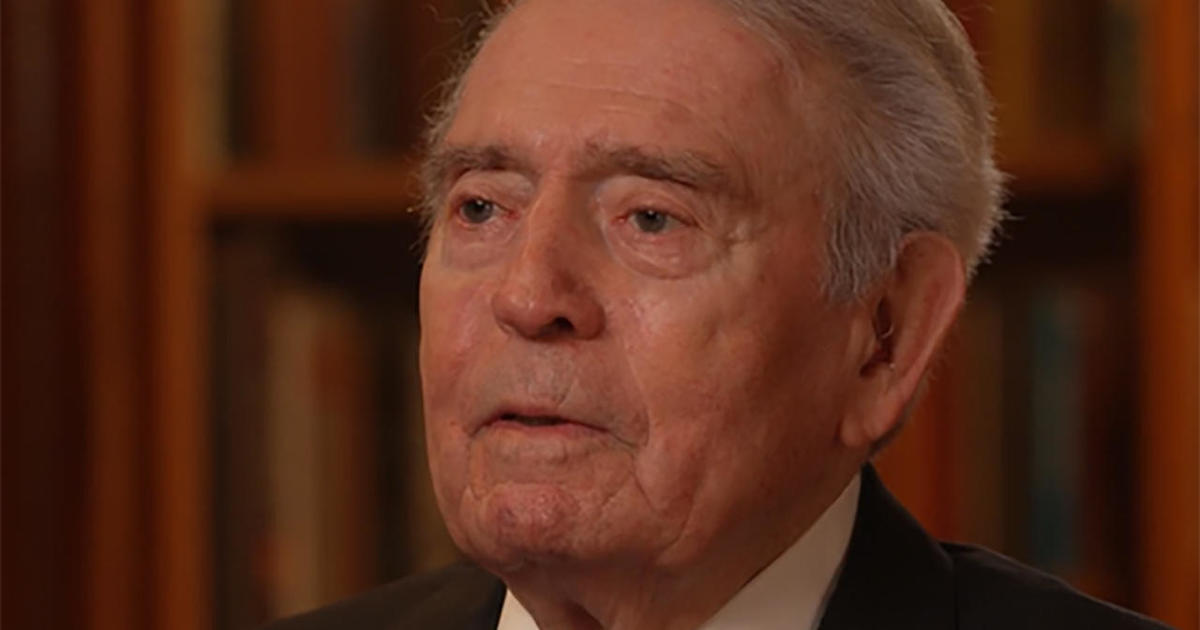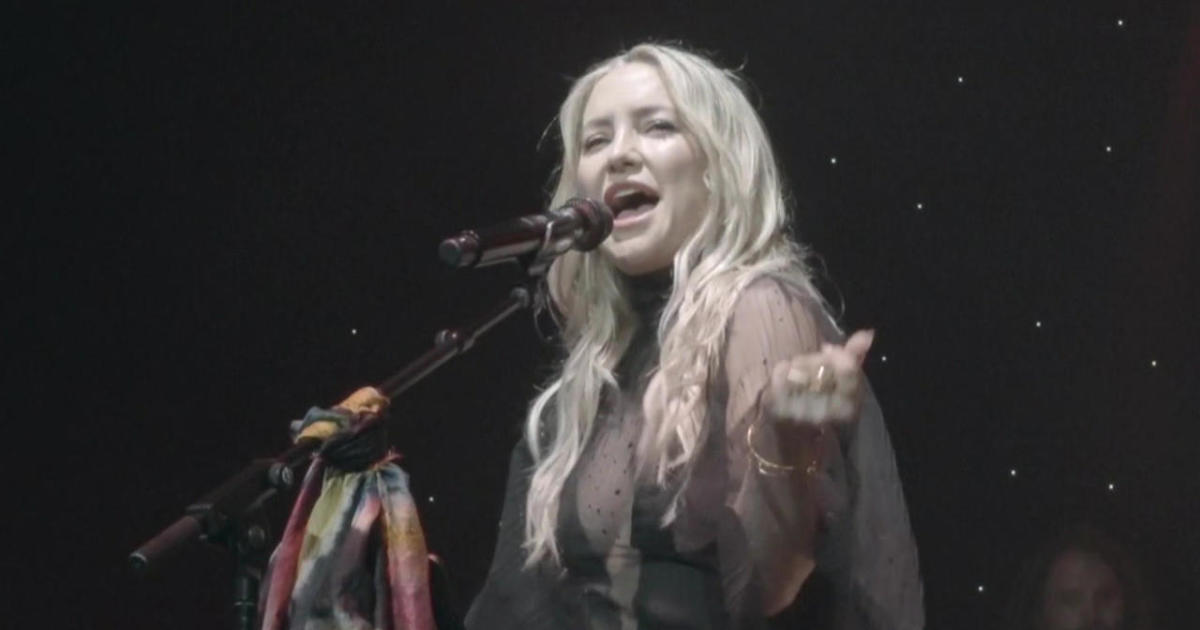Broadway's "How to Dance in Ohio" shines a light on autistic stories
Clinical psychologist Emilio Amigo, who runs a counseling center for autistic people in Columbus, Ohio, had a big idea: "Many of my clients never went to their homecoming or prom because they weren't welcomed," he said. "I'm like, 'How many of you guys would love to go to a big formal?'"
Putting on a prom involved teaching his clients new skills, like dancing or asking someone out. Their journey was the subject of a 2015 documentary called "How to Dance in Ohio."
That story is now a Broadway musical.
"All of us who work on the show get messages from autistic individuals saying, 'I've seen myself represented onstage.' That's what we do it for," said Sammi Cannold, the show's director. She was not, however, its first one. That was the legendary Hal Prince, director of shows like "Phantom of the Opera," "Evita," "Cabaret," and many Sondheim musicals. He sadly passed away in 2019.
"Hal's granddaughter is autistic; my brother is autistic," said Cannold. "For him the show was very personal; for me the show is very personal."
But "How to Dance in Ohio" isn't just about autistic people. All of the autistic characters are played by autistic actors.
Cannold said feedback she got from people saying, "I don't think you're gonna find the actors that you're looking for," implied that there aren't enough Broadway-caliber actors with autism. But, she said, "We could've cast the show three times over."
Ashley Wool, Imani Russell and Liam Pearce are among the show's autistic actors. "I think you've picked the perfect three people, because all three of us are so different," said Pearce.
Pearce was diagnosed as being on the spectrum when he was age five; Wool was a junior in college. And Russell said it was May 2021 when they were diagnosed: "And I was really excited, 'cause I finally had a word for something that I think I knew about myself, internally, for a long time, but I didn't have the language for."
Autism comes in a huge variety of forms; it's described as a spectrum for a reason.
Amigo said, "The great enemy of someone who's autistic is social anxiety and anxiety. And that comes from, 'I don't know what to expect, I don't know what I'm supposed to do, I don't know what to say.'"
Wool said, "People like me are more sensitive to a lot of different things, like lights or sounds."
"I think another thing, when it comes to being autistic, is the concept of masking," said Russell, "which is sort of having to hide the movements that we do, or the sounds that we make, or having to speak at times that you don't want to speak to make other people feel comfortable."
The actors were encouraged to blend their own expressions of autism with their characters'. Pearce said, "Sammi Cannold, our director, was very open and supporting of being, like, 'If you, onstage, feel the need to let out your energy or, like, show your excitement in your own, individual, physical ways that you do outside of this rehearsal space, feel free.'"
The rehearsal process offered unusual accommodations for the cast and crew, like someone saying they have a sensitivity to scented soap: "And then our company management team will say, 'Okay, we're gonna replace all the scented soap in the building with unscented soap,'" said Cannold. "And so, it's hundreds of little things like that."
For autistic showgoers with sensory sensitivities, the show offers cool-down areas, sunglasses, and headphones.
And for non-autistic audience members, there's a message.
Do I only exist on this planet
to make somebody else feel inspired?
–"Nothing at All," from "How to Dance In Ohio"
Pogue said, "While the characters explicitly sing, 'We don't want to be objects of pity, we don't want to be inspiring,' at the same time, there's probably not an audience member who doesn't say, 'It's about people with challenges succeeding,' which is inspiring."
Russell said, "I like to pose the question, is your feeling of inspiration just infantilization? They're so inspiring because they're autistic, but they did that? Autistic, but they did that? It's not that our disabilities are the hurdles. It's other people's expectations for us that are the hurdles."
Wool added, "The point that we're making is, it's not an 'In spite of…' It's a 'Yes, and…'"
"How to Dance in Ohio" has earned itself an army of fans. Wool recalled at the very first preview, "The seven of us came on stage to do the prologue -- standing ovation, for like a minute-and-a-half. I was like, 'Wait a minute. We haven't done anything yet! We haven't earned this!'"
"It's so cool, at our stage door and stuff, like, young kids have come up to me like, 'I'm autistic, too!'" said Pearce.
But some of the biggest fans are the real people from the documentary. Sammi Cannold introduced them on opening night, including the real-life Drew – Pearce's character. "It was a really crazy, awesome, surreal experience to be able to, like, look at him and be like, 'Hey, thank you for existing, because my entire life and what I do here every night, is because of you.'"
Dr. Amigo liked it, too. He said he's seen it "a few times. if I'm counting right, it's about 13."
Do the show and the documentary help his clients in any way? "Every day," he said. "Because it's a story about them. It builds our self-esteem. It builds our sense of significance."
When cast members were asked how they hope their show will be perceived in the future, Russell said, "Oh, 'How to Dance in Ohio,' that was one of the beginnings."
"A turning point," said Wool.
Amigo said, "I hope that in ten years, it's no longer a big deal that there are seven autistic actors in a cast. Like, 'Okay. So what? That's great. Let's go. Let's start working on a play!'"
For more Info:
- "How to Dance in Ohio" is at the Belasco Theatre, New York City
- The documentary "How to Dance in Ohio" is currently streaming on Max
- Dr. Emilio Amigo, Amigo Family Counseling, Columbus
Story produced by Wonbo Woo. Editor: Steven Tyler.
CORRECTION: Due to an editorial error, a photo was mis-captioned; it actually shows actress Madison Kopec. We regret the error.







